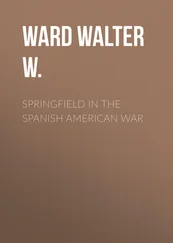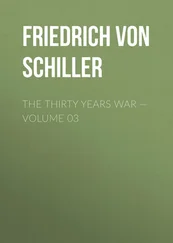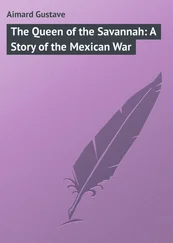In response, Parrodi received from Santa Anna on October 14 an order, confirmed three days later, that all the heavy guns, the stores, and his three gunboats, light but effective craft, should be sent up the river, and that he himself with his troops and what field pieces could be taken along, should withdraw to Tula, a place behind the mountains. Parrodi, who did not believe in the war, liked these instructions, and proceeded to execute them. The government, however, seemed unwilling to abandon Tampico, and the comandante general, perplexed by this difference of sentiment and by the protests of the governor, troops, people and foreign consuls, offered to Santa Anna some arguments against his instructions: but the latter, annulling without ceremony the government’s action, impatiently ordered immediate evacuation. His reasons were, in brief, that he could not reinforce the garrison adequately without dividing the army in a manner incompatible with his plans; that, even should he undertake to do so, this aid could not arrive in time; and that, since a victorious defence could not be expected, it was important not only to save the men and material, but especially to avoid the moral effect of another American triumph; and no doubt, on the assumption that Conner was prepared to make a strenuous, unflinching attack with such forces as Parrodi described, these reasons were sound.38
Excited by the urgency of his instructions, which were received on the twenty-second, the comandante general now endeavored to atone for the time lost, and executed a flight instead of an evacuation.30 The redoubt at the bar was destroyed; large quantities of war material were thrown into the river; with the aid of the British consul a pretended sale of the gunboats was effected; and on October 27 and 28 the troops hastily withdrew.38
While these events were taking place, timely notice of them was forwarded to Conner. Chase, the American consul, had been expelled and had taken refuge on a blockading vessel; but his wife, who was a British subject, remained in Tampico, and on October 20 she wrote to the Commodore that Parrodi would evacuate the town on the following day, and that no resistance would be made against an American attack. By November 5 Conner received this news, but a lack of provisions made it impossible for him to set out the next day, as he desired to do. On the tenth, eleventh and twelfth, however, eleven vessels made sail from Antón Lizardo with orders to rendezvous fifteen miles from the shore on a certain east and west line a little south of Tampico. The frigates Raritan and Potomac did not appear there; but as the weather was fine, Conner decided to proceed, and at break of day, November 14, the Mississippi , Princeton , St. Mary’s , three small steamers—the Spitfire , Vixen and Petrel —and three schooner-gunboats joined the blockading vessel off Tampico bar. By this time the Commodore knew that Parrodi had not evacuated the city on the twenty-first, and, supposing the garrison was still there, expected some hard work;31 but the weather looked favorable, and he prepared at once to attack.38
Lieutenant Commanding Hunt, the blockading officer, had examined the bar; and piloted by him the three small steamers towed the gunboats across it. By ten o’clock the river was entered successfully, and the Commodore advanced immediately toward the city. The low shores were covered with rich vegetation; the huts, thatched with palmetto leaves, appeared cosey if not grand; broad-leaved bananas and loaded orange-trees grew beside them; tall cocoanut palms languidly waved their graceful fronds above; and the long line of steamers and schooners, followed by nine boats from the frigates packed with officers, marines and sailors, made an impressive spectacle as they moved slowly up the smooth but rapid Pánuco under an azure sky.38
Conner himself was on the Spitfire . As he approached the town, he was met by a deputation from the ayuntamiento (city council), who stated that having neither the means nor the disposition to resist, they desired to capitulate. Perry and two other officers then went ashore with the deputation to arrange terms; but after a long conference, finding this impossible—though of course the expediency of surrendering was not in debate—all returned to the Spitfire , and at length an informal agreement was reached. Next morning the chief points of this were embodied in the following declaration:32
“United States Steamer Spitfire. Off the City of Tampico, November 15, 1846. Commodore Conner declines a Capitulation with the Authorities of Tampico as he considers it unnecessary. He accepts the surrender of the City, and takes military possession of it. He assures the Inhabitants, at the same time, that he will not interfere with their Municipal Regulations, or their Religion; and that private property shall be respected, provided that the public property of all kinds, be delivered up at once, and in good faith. Should an assault be made by the Inhabitants of the City, on the American Forces, the Inhabitants will be held responsible for the consequences. Commodore Conner, so long as the Authorities and Inhabitants of the City observe good faith towards him, will consider them under his protection;—a different course will expose them to serious evils.”38
The danger of an assault was not imminent, for the National Guards could find but one hundred serviceable muskets, and all the people of the town, who usually numbered about 15,000 but were now perhaps half as many, lined the streets and gazed at the Americans as mere spectators. All the public property that was movable had been carried away, but the public buildings were now occupied; and, as the fraudulent sale of the gunboats was detected, three much needed vessels, built at New York, were added to our navy.33 Steps were then taken to recover what Parrodi had transported up the river.34 November 18 Tattnall set out with the Spitfire and Petrel , and the next forenoon he reached Pánuco town, the head of navigation, some eighty miles from Tampico, where it was known that heavy guns had been left. Everything had been concealed but the concealment proved ineffectual. He disabled nine 18-pounders, threw into the river a quantity of balls, and burned some camp equipage; and a 24-pounder was taken aboard.38
In ordering the capture of Tampico, the American government had intended that Patterson should be at hand to occupy the town, and as this calculation had been upset by Taylor, it now became a question how to retain the prize. The place of the squadron was at sea; without the help of every man it looked almost impossible to manage the vessels in bad weather; and officers of nearly all grades were actually wanting. So Perry in the steamer Mississippi sailed from Tampico on the evening of November 15 for Brazos Island, and the next day left an officer there to explain the situation. Without delay the news was forwarded to Patterson at Camargo, and he directed that men and cannon should go “forthwith” to the captured city. His instructions were not waited for, however. Lieutenant Colonel Belton, who occupied Camp Belknap with six companies of the so-called artillery, embarked for the mouth of the river on hearing from Perry; and on November 21 Colonel Gates and about 500 men sailed from the Brazos in the Neptune , leaving two more companies to follow the next day in the Sea .35 Both vessels were driven ashore, but fortunately the troops were saved in both cases. By the twenty-third Tampico had therefore a garrison of about 650 good regulars. Some ordnance also arrived; and Conner, besides landing a pair of carronades, remained in the harbor with four or five gunboats. Fortunately the only land approaches were by a neck at each end of the town between Carpintero Lake and the river; and the work of fortifying these, begun at once, was prosecuted night and day.38
Читать дальше












